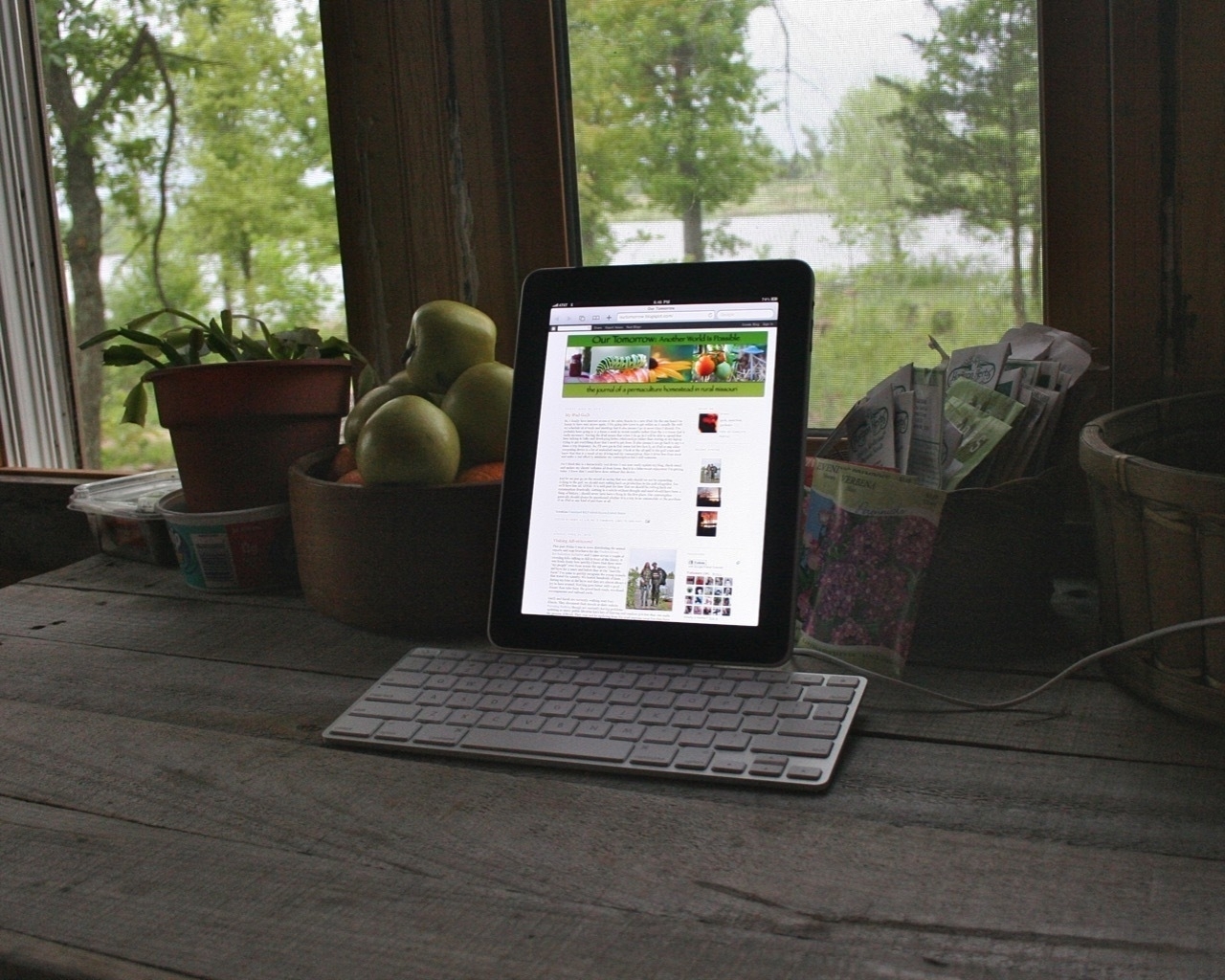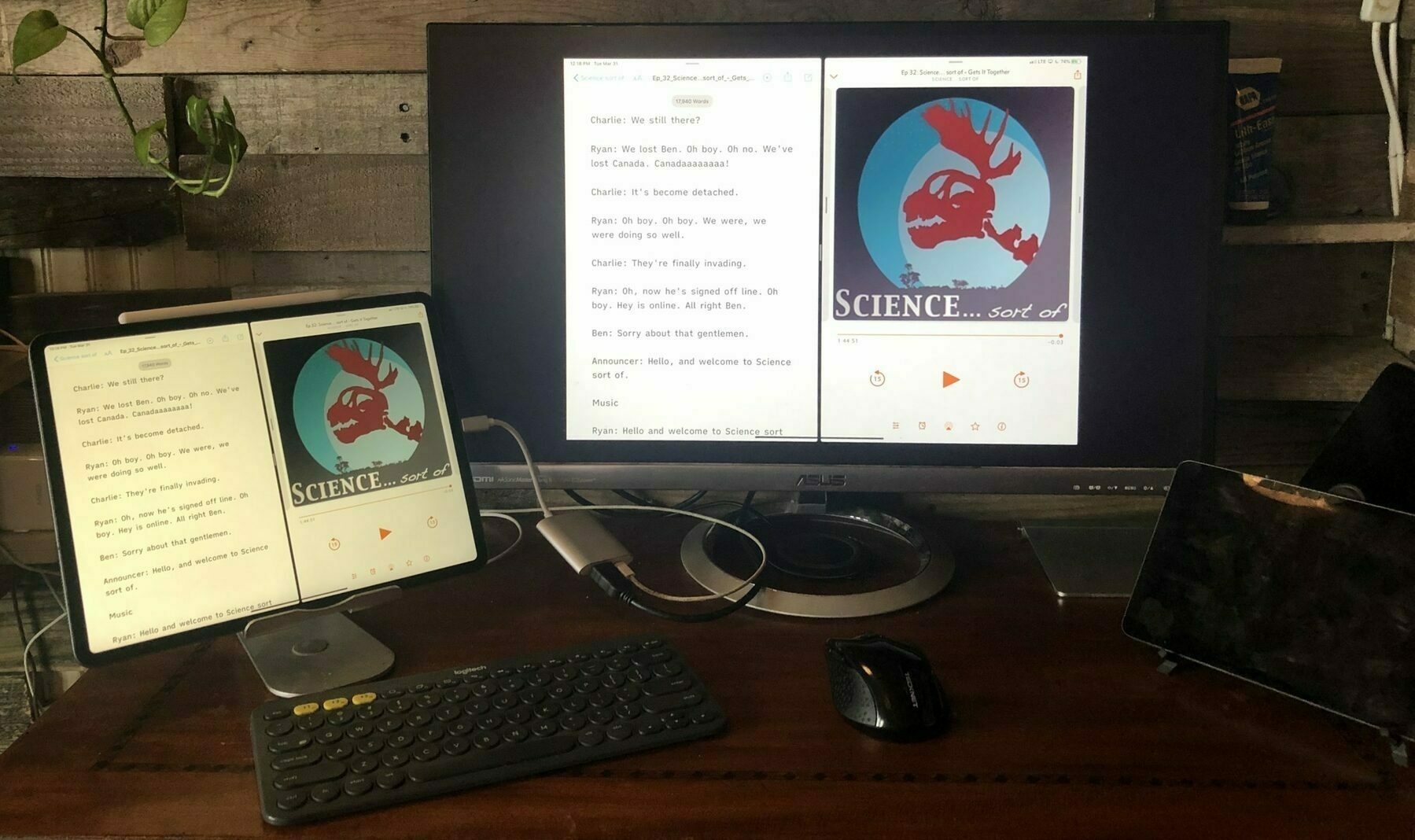iPad Journal: A Decade of iPad
 My original iPad docked in Apple’s Keyboard Stand
My original iPad docked in Apple’s Keyboard Stand
On April 19, 2010 I got an email from Apple:
Thank you for your recent order of the magical and revolutionary iPad 3G.We would like to confirm that your order will be shipped in late April as communicated at the time you placed your order. You will receive a confirmation notice when your order has shipped.
Woot! According to Wikipedia the first iPad was released on April 3, 2010. Like many Apple nerds, I remember watching the keynote when Steve Jobs introduced the original iPad on January 26, 2010. I ordered it the day it became available for order. I was far more interested in the iPad than the iPhone which I didn’t purchase until 2012.
My iPad arrived a few days later and, like many (3 million were sold in the first 80 days), I loved it. But in my case I was immediately curious about the potential for using the device for work. One of my first app purchases was Gusto which was one of the first coding and ftp apps. For an early gen iPad app it was surprisingly capable and I used it fairly often. Here’s an excerpt of my mini-review of the iPad which makes pretty clear how quickly the iPad became a part of my workflow:
So, I finally have internet access at the cabin thanks to a new iPad...For now I’m making an effort to actually do the work on the iPad which means adapting my normal Mac-based workflow. I’m using Gusto for html editing and ftp. It’s a pretty good app and allows me to get most of the work done. The exception is image editing and uploading of images. For editing my Blogspot blog I’m using BlogPress which works pretty well. For web browsing on the iPad I’m using iCab Mobile rather than Apple’s Safari because iCab has a much better tab system which does a better job of caching files and is much easier to switch between tabs. For rss reading I’m using Reeder which is by far the best rss reader I’ve found for the iPad. NetNewsWire didn’t cut it.
Depending on how well this goes I may end up jailbreaking which will allow for me to share the iPad internet connection to my MacBook Pro for working the old fashioned way. We’ll see.
Yes I think this is a fantastically cool device. I can now easily update my blog, check email and update my clients' websites all from home. The AT&T network here is the slower Edge network but it’s better than nothing. I’m averaging 40-70k a second, which is basically dial-up speeds. Plenty to take care of the basics though I look forward to the day we get 3G!
Ha. I can’t believe how long I got by with 70K internet. And when 3G came it wasn’t much faster but I was happy to have it! I did jailbreak the iPad for the hotspot function but the iPad remained an important part of my workflow.
By the time the iPad 2 was announced in March 2011, 15 million original iPads had been sold. It was with the iPad 2 that I saw many in my family become daily computer users. My granny, mom, aunts and an uncle all became regular users of email and the web with their first iPads. The iPad became the primary computer for many, if not most of my extended family.
I often get frustrated when I hear tech nerd podcasters and writers discuss the iPad because they make it all about themselves. I think they forget or omit the important fact that many, probably most, iPad users were and probably still are users for which a simple iPad is better. The iPad, as introduced by Apple, was a computer for any person, not just advanced users that were already served by desktop and laptop computers.
In the years since the introduction we’ve seen that tension stretch and pull at Apple as it has attempted to reconcile the simplicity that serves beginner users, young or old, and the more complex needs of power users like myself that gradually moved to adopt the iPad as primary computers. Ten years on and it seems to me that the pro-class users that finds voice in the tech media are getting what they’ve been clamoring for, a more powerful iPadOS that matches up to the power of the hardware. Even so, anecdotally, the more basic users (such as my above mentioned family) are still happily using their iPads. I suspect that this reflects Apple’s gradual evolution of features with the basic features still on top while more advanced features remain optional for those that want them.
 My current set-up changes all the time. Sometimes used with a keyboard, mouse and monitor on a desk, other times outside on the porch or under a tree. It changes based on the task.
My current set-up changes all the time. Sometimes used with a keyboard, mouse and monitor on a desk, other times outside on the porch or under a tree. It changes based on the task.One of the often repeated questions is if the iPad is going to get all these features, why not just use a Mac? Or was Apple wrong with it’s approach as it seems to be moving the device closer to Microsoft’s approach with the Surface. I think the answer is pretty simple. The iPad is still a tablet first. That’s all that really needs to be said. On a fundamental level, any user can pick up the iPad and do everything they’ve been doing for the past 10 years using their fingers. It’s still a touch first device.
For those that want to do more we have more advanced features ranging from multitasking to multiple instances of the same app to added input options via the Pencil and now a mouse and trackpad. None of these features are required to use an iPad but they are now there for those of us that want them.
I think this is the real strength of the iPad is this flexibility of form factor. For my aunt it is still just a big iPhone, a bigger slab of glass that she can use by tapping with her fingers. It’s still easy for her to send an email, browse the web, send a message, save a photo or play a game. She does these things everyday and has for 10 years. When she ordered the very first iPad she also got the keyboard Apple made for it but she never used it. She wanted the big iPhone, a tablet that was easy to use.
On the other hand I bought and used that keyboard. And many Bluetooth keyboards in various shapes and sizes since. I still use the iPad as a tablet and appreciate that I can do so. But I also use it with a keyboard and sometimes attach it to an external monitor and now I’m also using a mouse with it. Not all the time, but some of the time. When the Magic Trackpad arrives this week I’m sure I’ll use it most days that I use my iPad for certain tasks. Other times it will sit on a desk.
The first 10 years of the iPad has been a hardware and software evolution as will it’s next 10 years. I suspect that going forward it will retain the surface-level simplicity as it’s depth of power-user features increase. I’m looking forward to where Apple takes the iPad and have little doubt that it will continue to serve a wide variety of users in the future. On a personal note, I’ll happily continue to use the iPad everyday whether I’m holding it in my hands, using it in a stand with an external keyboard and trackpad or attached to the Smart Keyboard Portfolio. The iPad is still the personal computer I prefer to use for work and fun.